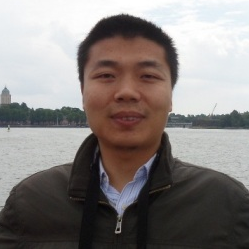Advances in Microalgal Harvesting
A special issue of Water (ISSN 2073-4441). This special issue belongs to the section "Water, Agriculture and Aquaculture".
Deadline for manuscript submissions: closed (31 December 2021) | Viewed by 8241
Special Issue Editors
Interests: Biomass Production; Algal Biofuels; Wastewater Treatment; Waste recycling; Sustainable development
2 Hubei Provincial Engineering Research Center of Systematic Water Pollution Control, Wuhan, Hubei Province, China
Interests: Algae-laden water coagulation; Biorefinery; Harvested microalgae dehydration
Special Issues, Collections and Topics in MDPI journals
Special Issue Information
Dear Colleagues,
Microalgae are promising feedstock for biofuel production. However, large-scale production of biofuels from microalgae is not yet economically viable, since high energy inputs are required for microalgae harvesting. Since the biomass density of culture broths is low (usually below 0.5 kg/m3) in the microalgal production systems, huge volumes of microalgae suspension need to be handled before the downstream biofuel production processes. In fact, 20–30% of the cost of the total biodiesel production is involved in the biomass harvesting process. Therefore, to develop cost-effective harvesting methods is a limiting key factor for the commercial use of microalgae, and presents as one of the most challenging areas during the microalgae biofuel production.
To facilitate downstream process, microalgal biomass harvesting aims to achieve high concentrated slurry that contains minimum 2–7% of total solid matters. In general, the commonly applied harvesting methods in practice include flotation, filtration, sedimentation, centrifugation, flocculation and an integration of flocculation and flotation. In addition, magnetophoretic harvesting has also been developed, as shown in literature. In an effort to shorten the high costs during microalgal harvesting, much progress in advancing the above-mentioned methods has been made and some vital breakthroughs achieved. This special issue is going to serve a platform for researchers worldwide to discuss the recent advances in microalgal harvesting.
We would like to see articles that address vital current developments in microalgal harvesting. We solicit high-quality, original research papers or review papers in the fields of microalgal harvesting by a wide range of methods.
Dr. Liandong Zhu
Dr. Cheng Yan
Guest Editors
Manuscript Submission Information
Manuscripts should be submitted online at www.mdpi.com by registering and logging in to this website. Once you are registered, click here to go to the submission form. Manuscripts can be submitted until the deadline. All submissions that pass pre-check are peer-reviewed. Accepted papers will be published continuously in the journal (as soon as accepted) and will be listed together on the special issue website. Research articles, review articles as well as short communications are invited. For planned papers, a title and short abstract (about 100 words) can be sent to the Editorial Office for announcement on this website.
Submitted manuscripts should not have been published previously, nor be under consideration for publication elsewhere (except conference proceedings papers). All manuscripts are thoroughly refereed through a single-blind peer-review process. A guide for authors and other relevant information for submission of manuscripts is available on the Instructions for Authors page. Water is an international peer-reviewed open access semimonthly journal published by MDPI.
Please visit the Instructions for Authors page before submitting a manuscript. The Article Processing Charge (APC) for publication in this open access journal is 2600 CHF (Swiss Francs). Submitted papers should be well formatted and use good English. Authors may use MDPI's English editing service prior to publication or during author revisions.
Keywords
- microalgae
- harvesting
- flotation
- filtration
- sedimentation
- centrifugation
- flocculation
- magnetophoretic harvesting






